Method Article
Concentration Determination of Nucleic Acids and Proteins Using the Micro-volume Bio-spec Nano Spectrophotometer
In This Article
Summary
This communication presents data on the accuracy and reproducibility of the BioSpec-nano UV-VIS spectrophotometer for dsDNA and protein quantitation. Even with ultra-small volumes (1 to 2 L), reproducibility is excellent, while the automated wiping function improves throughput and results in minimal carryover for more precise results.
Abstract
Nucleic Acid quantitation procedures have advanced significantly in the last three decades. More and more, molecular biologists require consistent small-volume analysis of nucleic acid samples for their experiments. The BioSpec-nano provides a potential solution to the problems of inaccurate, non-reproducible results, inherent in current DNA quantitation methods, via specialized optics and a sensitive PDA detector. The BioSpec-nano also has automated functionality such that mounting, measurement, and cleaning are done by the instrument, thereby eliminating tedious, repetitive, and inconsistent placement of the fiber optic element and manual cleaning.
In this study, data is presented on the quantification of DNA and protein, as well as on measurement reproducibility and accuracy. Automated sample contact and rapid scanning allows measurement in three seconds, resulting in excellent throughput. Data analysis is carried out using the built-in features of the software. The formula used for calculating DNA concentration is:
Sample Concentration = DF · (OD260-OD320)· NACF (1)
Where DF = sample dilution factor and NACF = nucleic acid concentration factor.
The Nucleic Acid concentration factor is set in accordance with the analyte selected1.
Protein concentration results can be expressed as μg/ mL or as moles/L by entering e280 and molecular weight values respectively. When residue values for Tyr, Trp and Cysteine (S-S bond) are entered in the e280Calc tab, the extinction coefficient values are calculated as e280 = 5500 x (Trp residues) + 1490 x (Tyr residues) + 125 x (cysteine S-S bond). The e280 value is used by the software for concentration calculation.
In addition to concentration determination of nucleic acids and protein, the BioSpec-nano can be used as an ultra micro-volume spectrophotometer for many other analytes or as a standard spectrophotometer using 5 mm pathlength cells.
Protocol
1. Procedure for DNA Quantitation
- Turn ON the instrument.
- Open the BioSpec-nano software from the PC desktop.
- Click on the Simple Nucleic Acid -dsDNA tab (Figure 1).
- The software will establish communication with the instrument and run an initialization sequence. This verifies that the instrument is performing according to specifications.
- Select 0.7 or 0.2 mm on the pathlength slider. This selects the pathlength and all calculations are based on the pathlength selected.
- Next in BioSpec-nano software click Setup-Autowiping setup. Select 1 or 2.
- Pipette 2 μL (for 0.7 mm) H2O or buffer on the pedestal.
- Click blank or F6 for blank measurement. Every time a new pathlength is selected it is necessary to record a blank.
- Pipette 2 μL of sample on the pedestal.
- Click Start in the software or push the start button on the instrument. The Upper window moves to make contact with the sample droplet. Xenon flashes can be observed.
- Repeat the same sample 3 times to determine reproducibility.
- All data recorded is saved as .bud file.
- To save as a .pdf or .csv file click save pdf/csv or F9. Results can also be saved as a .csv file by using the appropriate selection in the save tab.
2. Protocol for Protein Quantitation
- Select Protein Quantitation tab (Figure 2).
- Enter the extinction coefficient e280, if known.
- If e280 is not known calculate it using e280Calc.
- Select 0.7 or 0.2 mm on the pathlength slider.
- Click Setup-Autowiping setup. Select 2 or above.
- Pipette 3 μL (for 0.2 mm) H2O or buffer on the pedestal.
- Click blank or F6 for blank measurement.
- Pipette 3 μL of protein sample on the pedestal.
- Click Start in the software or push the start button on the instrument.
- Repeat the same sample 3 times to determine reproducibility.
- All data recorded is saved as .bud file
- To save as a .pdf or .csv file click save pdf/csv or F9.
3. Representative Results:
1. Results for DNA Quantitation
Figure 3 shows the data from measurements on a typical double stranded DNA sample. The concentration and OD 260/280 ratio calculated are also shown. Figure 4 contains reproducibility test results for DNA quantitation. The data in Figures 3 and 4 shows results are highly reproducible as evident from the low relative standard deviation of 0.26%.
Note 1:
Inaccuracy in DNA quantitation can arise from the presence of buffer components which may absorb in the UV region. It is also necessary to use a homogenous sample solution. As the amount of sample being pipetted is only 1-2 μL, careful pipetting of accurate volumes without introduction of any bubbles is required.
2. Results for Protein Quantitation
Figure 5 represents protein concentration analysis for BSA. The μg/ mL protein concentration is based on the e280 value. Figure 6 shows reproducibility analysis. It is evident from the relative standard deviation of 0.51% that the BioSpec-nano measures concentration precisely - not only for DNA but also for proteins.
Note 2: Factors affecting protein concentration
Accurate concentration determination of protein is feasible when there are minimum effects from instability caused by pH, buffers, temperature, or additives. Most purified protein goes through various steps of processing; hence it is possible that the protein may contain surfactants or other additives that may interfere with droplet formation. For such samples, using the 5 mm pathlength quartz cell is highly recommended.
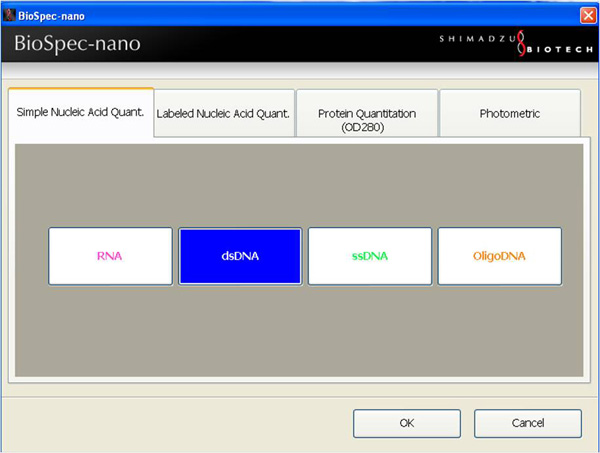
Figure 1. Analyte selection window for double stranded DNA quantitation
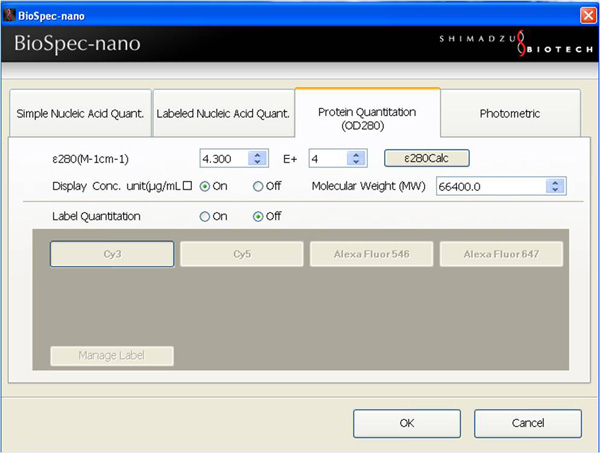
Figure 2. Analyte selection window for non labeled protein quantitation
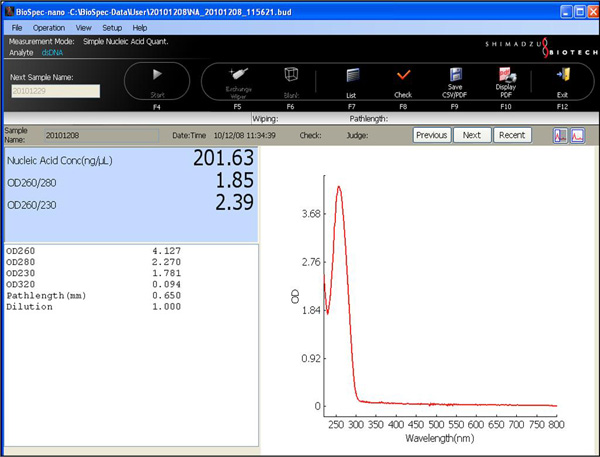
Figure 3. Representative data for DNA quantitation
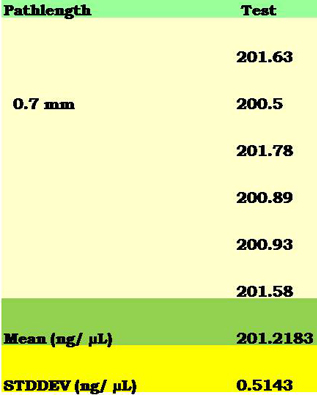
Figure 4. Reproducibility data for DNA quantitation
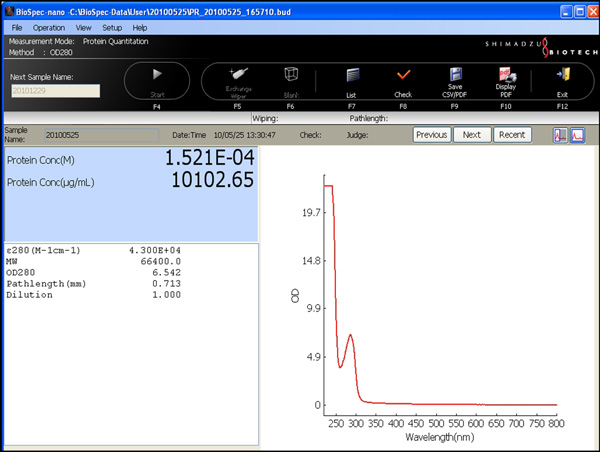
Figure 5. Representative data for protein quantitation
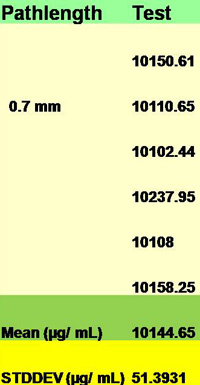
Figure 6. Reproducibility data for protein quantitation
Discussion
The BioSpec-nano has been engineered to solve current issues inherent in DNA quantitation methods, such as inconsistent results and tedious manual labor. Each measurement takes just 3 seconds, allowing an experienced molecular biologist to analyze about 3-6 multiple samples in a minute. The unique wiper feature not only improves the throughput of measurement, it also eliminates the need for manual cleaning of the pedestals, resulting in negligible carryover between measurements. Furthermore, tests using just 2 wipes for DNA samples containing 1000 ng/μL, indicated carryover less than 2 ng/μL.
The availability of a 5 mm pathlength cell provides an option to analyze dilute nucleic acid and protein samples and extends the use of this instrument for other applications.
Disclosures
Suja Sukumaran, PhD is an employee of Shimadzu who makes the instrument featured in this article.
Materials
| Name | Company | Catalog Number | Comments |
| BioSpec-nano | Shimadzu Corporation | ||
| Calf Thymus DNA | Sigma-Aldrich | ||
| Bovine Serum Albumin | Sigma-Aldrich |
References
- Aisubel, F. . Short Protocols in Molecular Biology. , (1999).
- Pace, C. N. How to measure and predict molar absorption coefficient of a protein. Protein Science. 4, 2411-2423 .
Reprints and Permissions
Request permission to reuse the text or figures of this JoVE article
Request PermissionExplore More Articles
This article has been published
Video Coming Soon
Copyright © 2025 MyJoVE Corporation. All rights reserved